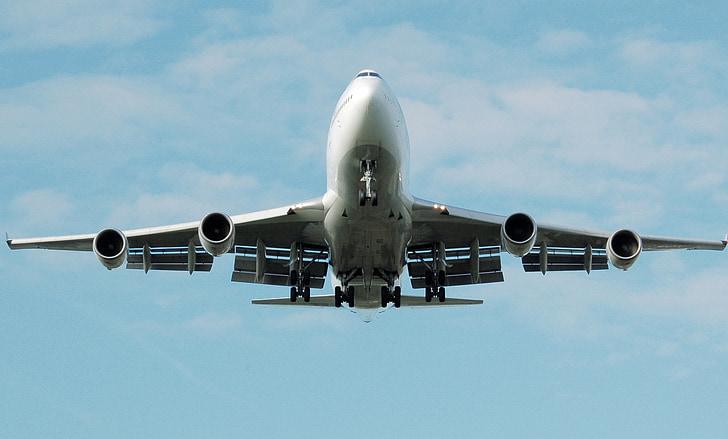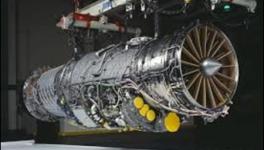India Must Take a Leaf From China’s Book as its Passenger Jet goes Commercial

Representational Image. Image Courtesy: pickpik
It has been some time coming, but China’s first large homemade passenger jet finally entered commercial service last week on May 28, 2023, on a China Eastern Airlines flight from Shanghai to Beijing.
The C919 jetliner, with a 156-168 seat capacity and a nominal range of 4,000-5,500km, is made by the state-owned Commercial Aircraft Corporation of China or COMAC. It is a single-aisle narrow-body passenger aircraft positioned to compete with the Boeing 737 and the Airbus A320.
By Western aviation industry standards, China had taken a long time, 15 years, from 2008, when the project and COMAC itself were launched, to 2017, when the aircraft flew for the first time. However, for a country and a company making such an aircraft for the first time, with numerous issues being encountered and having to be dealt with for the first time, this timeline should be considered reasonable.
Whereas full details are not known, and indeed cannot be known in as sensitive an industry as aviation, that too in China, the trajectory of design-development of the C919 is highly instructive about how China approaches technology development in a strategic and high-tech area. In particular, there are also many lessons for India which, at least on paper, also has a similar goal of technological self-reliance.
Homegrown and Foreign Technologies
The C919 is a significant step forward in China’s determination to develop advanced technologies matching those in the West. China had already developed several military aircraft and smaller civilian jets, notably the Comac ARJ21, a short-haul or regional 78-90 seat aircraft mainly for the domestic market.
The C919, however, is a larger medium-haul passenger carrier aimed at taking on and competing with the global duopoly of Airbus and Boeing in that market segment and is, therefore, a different kettle of fish.
We should first note that the airframe, wings and tail are entirely indigenous. Many aviation analysts point to the overall silhouette appearance being very similar to the Boeing 737 and to external dimensions being similar to the Airbus A320, to the extent that the A320 and the C919 may be able to use the same unit loader system used to load the aircraft with cargo, baggage, supplies and so on.
It is believed that Comac used the Tianhe-2 supercomputer for designing the airframe and its aerodynamics, including what is called a supercritical wing which significantly improves the aerodynamic efficiency and reduces drag caused by the build-up of a supersonic shock-wave along the wave even though the aircraft itself is flying at subsonic speeds.
Overall, the C919, as available today, is in the early stages of the design development and production cycle, as examined in detail below. Here it should also be noted that, in terms of performance, the C919 suffers somewhat compared to its purported rivals, A320 and Boeing 737. A major handicap of the C919 is its range of around 5500 km for the extended variant compared to about 6500 km for Boeing 737-8 and A320. This seems to be linked mainly to the fuel tank capacity of the C919, which is only around 16,000 litres compared to about 24,000 to 26,000 litres in the A320 or Boeing 737.
The fuel efficiency of the C919 is also open to question at the present stage. Perhaps most importantly, the C919 was initially expected to be priced at around USD 50 million or roughly half the price of the A320 or Boeing 737. However, the latest estimates based on business insiders tracking current or potential deals for the purchase of C919 show that, most likely, the C919 would be priced at around USD 90-100 million compared to USD 100m-110m for its US and European rivals, which is not significant enough of a price differential to compensate for other handicaps.
On the other hand, we should also note that, although hailed as a path-breaking indigenous achievement, about 60% of the C919’s components, including its most essential elements, are of foreign, mostly US origin.
Most importantly, the C919 uses the CFM LEAP 1C engine made by the 50-50 collaboration between France’s SAFRAN and General Electric of the US, currently the world’s largest-selling aero-engine used in several variants of Boeing and Airbus aircraft, including the Boeing 737 Max and the Airbus A320 neo, the former suffering poorly due to its design problems and also primarily due to the PW1000G engine made by GE’s giant US rival Pratt & Whitney.
China is simultaneously developing its own ACAE CJ-1000J starting from 2009. Most observers believe, however, that China may still be at least 10 years away from completing the development of this engine, proving what is well-known in aviation, namely that turbo-jet aero-engines are the most complex technology of an aircraft and the most difficult to develop.
Only the US, UK, France and the Soviet Union/Russia have this capability for larger civilian and military aircraft. Even China’s smaller ARJ21 is powered by General Electric’s GE CF24 engines. China’s military aircraft, the J7 or MiG-21 under license, the reverse-engineered JF-17 using a Klimov RD93, and its “fifth generation” J20 fighters powered by Russian Lyulka-Saturn AL-31 engines, all use Russian engines or domestically adapted variants.
Several poorly-informed critics have belittled India’s Tejas Light Combat Aircraft (LCA) for having about the same percentage of foreign technologies or systems. However, such criticism ignores the compulsions for imported components or sub-assemblies at early stages of design development and production, especially when scales are not large enough to justify domestic development and manufacture of all these specialised technology elements. The important question is whether and how the extent of indigenisation is proposed to be increased.
On this count, China’s plan for C919 appears to be more future-ready, partly due to the larger scales available to civilian aircraft compared to the more limited production of fighter aircraft in India and partly due to the domestic technology and manufacturing base available or being prepared in China.
Phase-wise Indigenisation
Of the other major components or sub-systems, the engine nacelle or shell, advanced inlet systems, thrust reverser and exhaust system are by France’s Nexcell; the integrated modular avionics, air-conditioning, and landing gear are by Germany’s Liebherr, along with its Chinese collaborator.
Many other components or sub-systems are made by China-based joint ventures with foreign companies such as US firm UTAS for electrics, Rockwell Collins for cabin systems and avionics, Honeywell for fly-by-wire systems, flight controls, auxiliary power systems and brakes, and Parker for hydraulics, actuators and fuel systems.
Canadian aviation major Bombardier has provided overall consultancy on supply chains, electrical systems, cockpit, flight training, human interface, sales and marketing. Along with the engine, China is determined to and is moving to ultimately indigenise all these sub-systems.
Without getting too technical, this shows that China has, over the years, built up an extensive aviation industry and component or sub-systems ecosystem comprising Chinese companies in collaboration with US, French, British and other specialised foreign majors. China also has an Airbus A320 assembly line and makes several elements of Boeing airliners.
China has acquired these assets by leveraging its massive orders for Boeing and Airbus, nowadays mostly the latter, and compelling these aviation majors to set up assembly lines, sub-assembly and component manufacturing joint ventures. It appears that elements of such a supply chain have been strategically identified and positioned in the domestic manufacturing ecosystem so that, one day, they come together and enable an indigenous structure.
It should also be noted that China has, in a planned manner, reverse-engineered these and other technologies to indigenise the know-how. This is easier said than done and involves much more than just copying a design. Despite years of license manufacturing of foreign military hardware in India, this kind of reverse engineering and technology absorption has not been achieved. Nor has India’s large domestic market, next only to China’s, been adequately leveraged to obtain concessions, domestic manufacture and technology transfer.
Whether true or not, US companies and the government have also long accused China of industrial espionage and hacking of their collaborators’ systems to get at proprietary technologies, with some Chinese nationals and their agents also having been caught, tried and sentenced for stealing company secrets.
Whatever the truth of these accusations in a diplomatic, commercial and strategic world where mutual espionage, even between allies, is widespread, all these measures taken by China show that it is determinedly pursuing its “Made in China 2025” strategic plan announced in 2015, to become a global player or leader in the manufacturing of advanced technologies including aviation and avionics.
China is playing a long game here. To achieve its goal of developing and making an indigenous passenger aircraft, China has first set up a domestic manufacturing base pressurising foreign companies to enter collaborations by leveraging large domestic orders, then using these collaborations to develop indigenous technologies, and finally, sometime in the future indigenously developing its aircraft. With the C919, China appears to be somewhere between phases 2 and 3.
In contrast, at least going by history to date, India appears unable to cross over from Phase-1 and transition towards Phase-2, the last phase being a far cry away.
Lessons for India
In broad terms, India has shown a lack of determination to pursue the goal of technological self-reliance in aviation, both military and civilian. For many decades since independence, India remained satisfied in the serial license production of foreign military aircraft, especially given the limited numbers, especially for Western fighters. In both Western and Soviet/Russian aircraft types, India refrained or allowed itself to be pressured to avoid reverse engineering or any other strategy to acquire technology, especially design capability.
After liberalisation in the 1990s, India decided to open up to FDI (Foreign Direct Investments) in defence manufacturing, including up to 100%, in the belief that this would tempt foreign majors to set up manufacturing bases in India but to no avail since the foreign majors were looking for larger volumes and could not be otherwise be tempted to transfer technologies.
India also badly handled its offsets policy for military orders, in which offsets should have been used strategically for developing a domestic manufacturing ecosystem for components and sub-assemblies. Instead of dictating terms to foreign suppliers leveraging the substantial orders, India allowed itself to be pushed into allowing the suppliers to select their own offsets projects where only commercial rather than strategic interests were involved.
India seriously missed the bus in civilian aircraft, which had a far more attractive large-volume demand from domestic airlines. Already, domestic carriers have placed huge orders of over 1500-2000 aircraft, with projected demand of more than 6,000 aircraft over the next couple of decades. This provided a massive incentive for the indigenous design and development of civilian passenger aircraft, with provision for foreign collaboration, gradual technology absorption, a large manufacturing ecosystem and finally, completely indigenous aircraft development.
More than a decade ago, these columns had urged the development of a roughly 90-100 seater passenger aircraft, followed by the design-development of a 150-160 seater aircraft, more or less the trajectory followed by China.
The short-sightedness of the aircraft industry, aversion to risk on the part of the government, and overall timidity of all stakeholders prevented such a goal-oriented path. This is still possible, but are there any takers?
The writer is with the Delhi Science Forum and All India Peoples Science Network. The views are personal.
Get the latest reports & analysis with people's perspective on Protests, movements & deep analytical videos, discussions of the current affairs in your Telegram app. Subscribe to NewsClick's Telegram channel & get Real-Time updates on stories, as they get published on our website.























